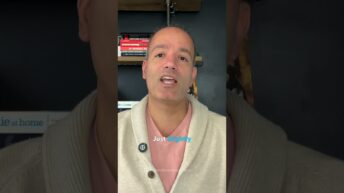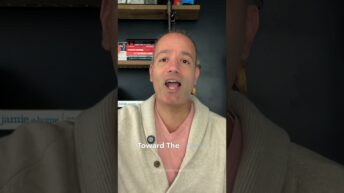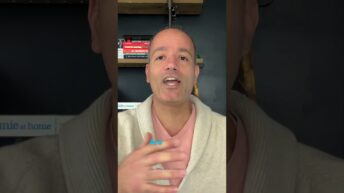As I promised in last week’s video I’m going to share with you the 3 elements of consumption and if you haven’t watched the first video just comment below and send the link over to you.
Consumption is a matter of three elements. The first thing is intimidation, the second thing is isolation, and the third thing is implementation. I’ll explain that in a little more detail.
What happens when anyone gets a product for instance?
Supposing you got a product like Photoshop.
You’ve bought into it, you’re all excited, and you’re ready to go, and then you open up the program. You’re looking at the screen and it’s completely intimidating. There’s all these toolbars and all these drop-downs and all these kinds of things, so that’s the first thing that happens. After the excitement of buying a product or service, everyone gets intimidated and very few of us can go past that intimidation, because you learn how to do the second thing, which is isolation.
People who are exceedingly good, who we tend to call talented, are really people who have worked out or isolated things. What they do is they have learned a pattern of isolating. For the rest of us who are not able to isolate, the creator has to isolate things. So you go from intimidation, and to remove intimidation you have to isolate things.
To give you an example, if you’re giving a presentation and you’ve got one hour of content, instead of making you listen to one hour of content, I give you a small preview maybe the night before, maybe in the form of notes or something… 10 pages, 5 pages. That removes the intimidation, because that’s the whole problem. When you get Photoshop you’re intimidated. If on the other hand I show you a simple thing that you can do in Photoshop, that removes one layer of intimidation, that’s called isolation. That takes us to the third part, which is implementation. Once I isolate something and I make it easy for you, then it’s very simple for you to go and to implement it. So those are the three stages of consumption.
If you look at history, because a lot of stuff people talk about today, which is social media or vlogging or whatever, it’s all just media. The first time radio or TV came along people said, Wow! this is a great media. It’s very useful to attract clients, very useful to get people interested in you. When you convert them, that’s a little tricky, but the biggest problem with conversion is that, of course, a lot of people don’t know how to make you consume whatever you bought.
The second biggest problem is that for a marketer, for a producer, for someone who’s creating a product or service, the most expensive part of the deal is getting the customer to buy the first time. A lot of clients might be on our list for maybe 3 months, six months, a year, even three years, and never buy anything. The first purchase that they make is the most expensive for us, technically speaking. So the first sale is the most expensive. Therefore, it’s only profitable for you when people keep coming back, but the problem is how would they know that they have to come back? Now, you say logically, I’ve got other products. I’ve got other services and they should come back, but we’re so busy in today’s world that we may never notice these products, or we may notice these products or services and do them randomly and not get the benefits.
That’s where you need to implement Sequential Selling.
What sequential selling does is it makes sure that you know at the start, you are here. It’s like those “you are here signs.”
That philosophy needs to be taken into your services and your products. The customer doesn’t know what to do next or what should be done next. Of course you’ll try to sell them everything, but they get intimidated by that, so you can only sell them one thing at a time, but they still need to know where they are in the whole sequence of things. To let them know where they are in the sequence of things you have to create what is a sequential sale, which means “you are here.”
You need to create a pathway, so when customers come there they know exactly, “Oh this is step 1, this is step 2, this is step 3,” and they all follow these steps.
Now, this is not something new. If you look into religion you’ll find the same thing. For instance, if you’re looking into the Catholic church you’ll find that there’s a passageway. There’s baptism, Holly Communion, confirmation, and it goes on. Then at some point it lets you do whatever you feel like, but there’s a rite of passage, as it were.
The same thing would apply to any organization that understands sequential selling, so they will create Step 1, Step 2, Step 3, and really that’s what it is – laying out all your products and services in a way that you know what you’re going to do next with a client, and the client knows what they’re going to do next with you.
If you like this so far, make sure to check out part 2 next week where I talk about the 2 techniques to sell to people and how Apple uses Consumption and Sequential Selling. I would also love to hear if you have any questions just leave me a comment below, chat soon.






Add comment